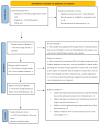Autosomal Recessive Non-Syndromic Deafness: Is AAV Gene Therapy a Real Chance?
- PMID: 38525683
- PMCID: PMC10961695
- DOI: 10.3390/audiolres14020022
Autosomal Recessive Non-Syndromic Deafness: Is AAV Gene Therapy a Real Chance?
Abstract
The etiology of sensorineural hearing loss is heavily influenced by genetic mutations, with approximately 80% of cases attributed to genetic causes and only 20% to environmental factors. Over 100 non-syndromic deafness genes have been identified in humans thus far. In non-syndromic sensorineural hearing impairment, around 75-85% of cases follow an autosomal recessive inheritance pattern. In recent years, groundbreaking advancements in molecular gene therapy for inner-ear disorders have shown promising results. Experimental studies have demonstrated improvements in hearing following a single local injection of adeno-associated virus-derived vectors carrying an additional normal gene or using ribozymes to modify the genome. These pioneering approaches have opened new possibilities for potential therapeutic interventions. Following the PRISMA criteria, we summarized the AAV gene therapy experiments showing hearing improvement in the preclinical phases of development in different animal models of DFNB deafness and the AAV gene therapy programs currently in clinical phases targeting autosomal recessive non syndromic hearing loss. A total of 17 preclinical studies and 3 clinical studies were found and listed. Despite the hurdles, there have been significant breakthroughs in the path of HL gene therapy, holding great potential for providing patients with novel and effective treatment.
Keywords: DFNB; adeno-associated virus (AAV); gene therapies; hearing restoration; recessive mutations; sensorineural hearing loss.
Conflict of interest statement
There are no conflicts of interest, financial, or otherwise.
Figures
References
Publication types
LinkOut - more resources
Full Text Sources
Other Literature Sources


